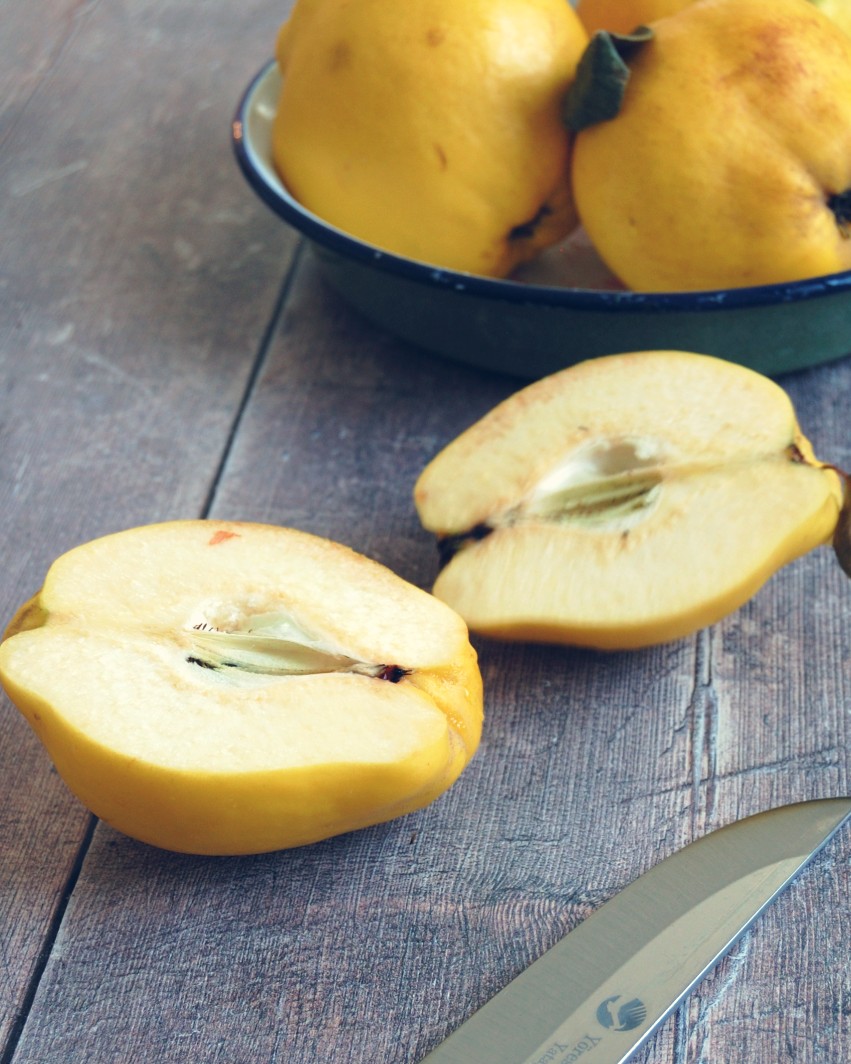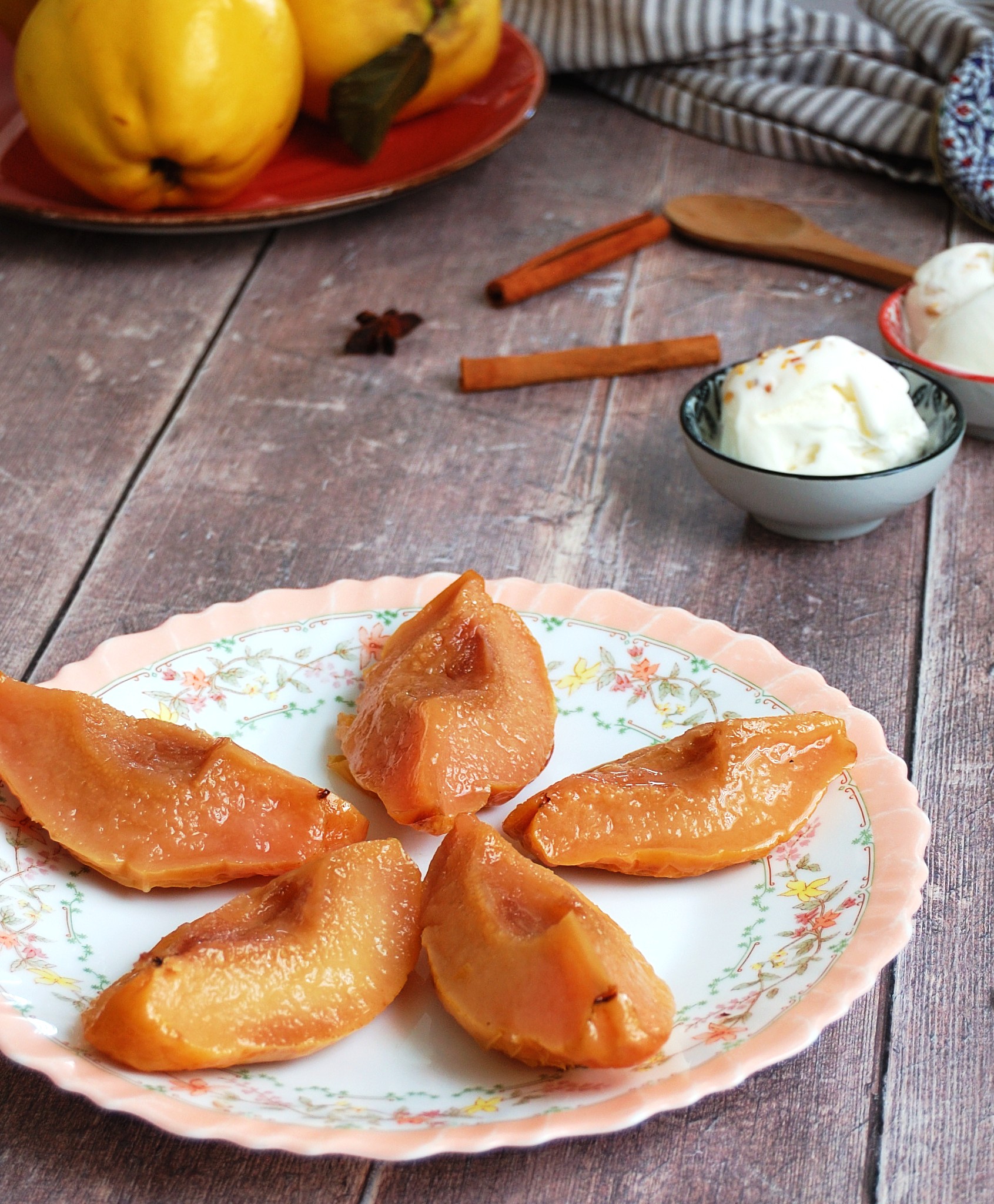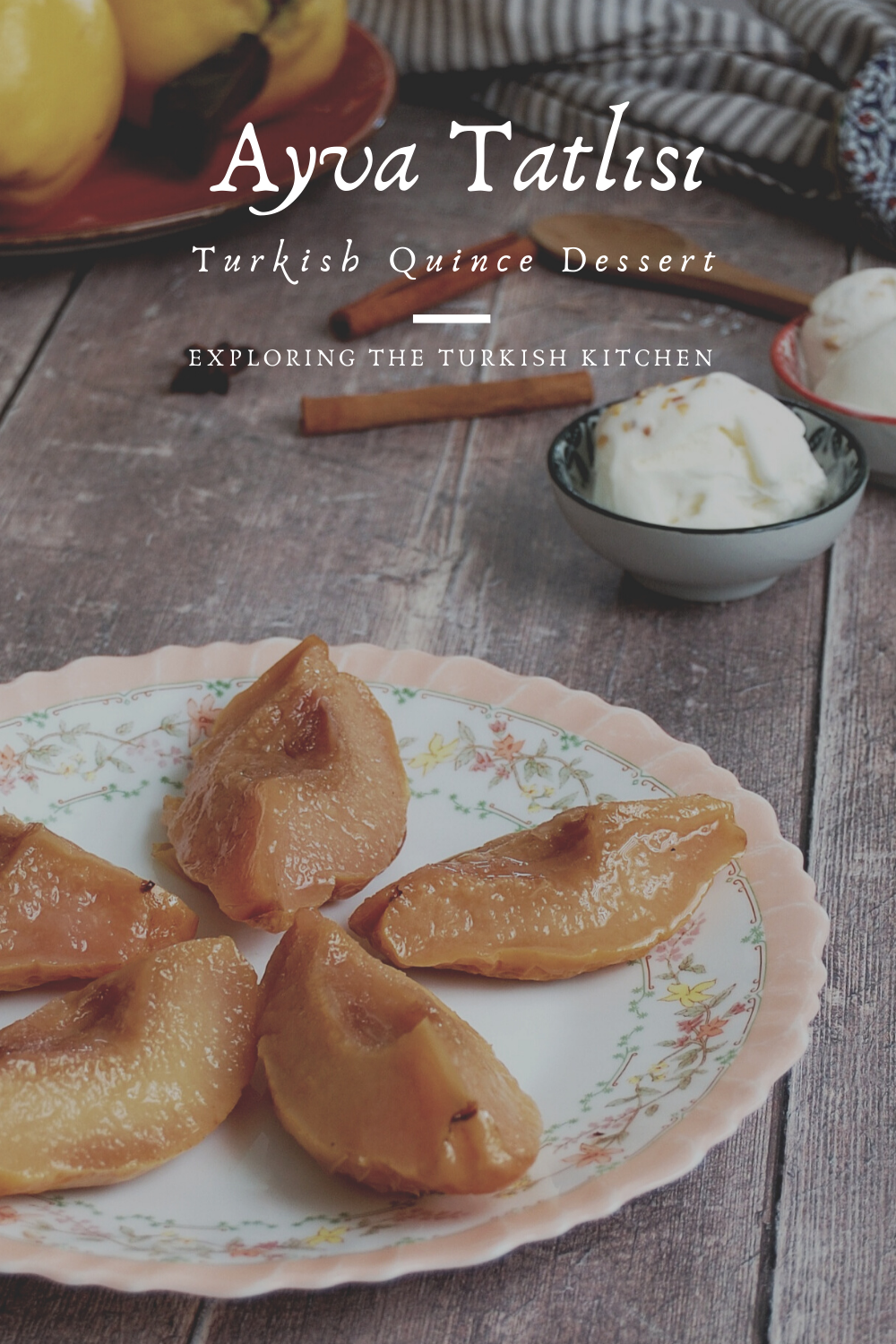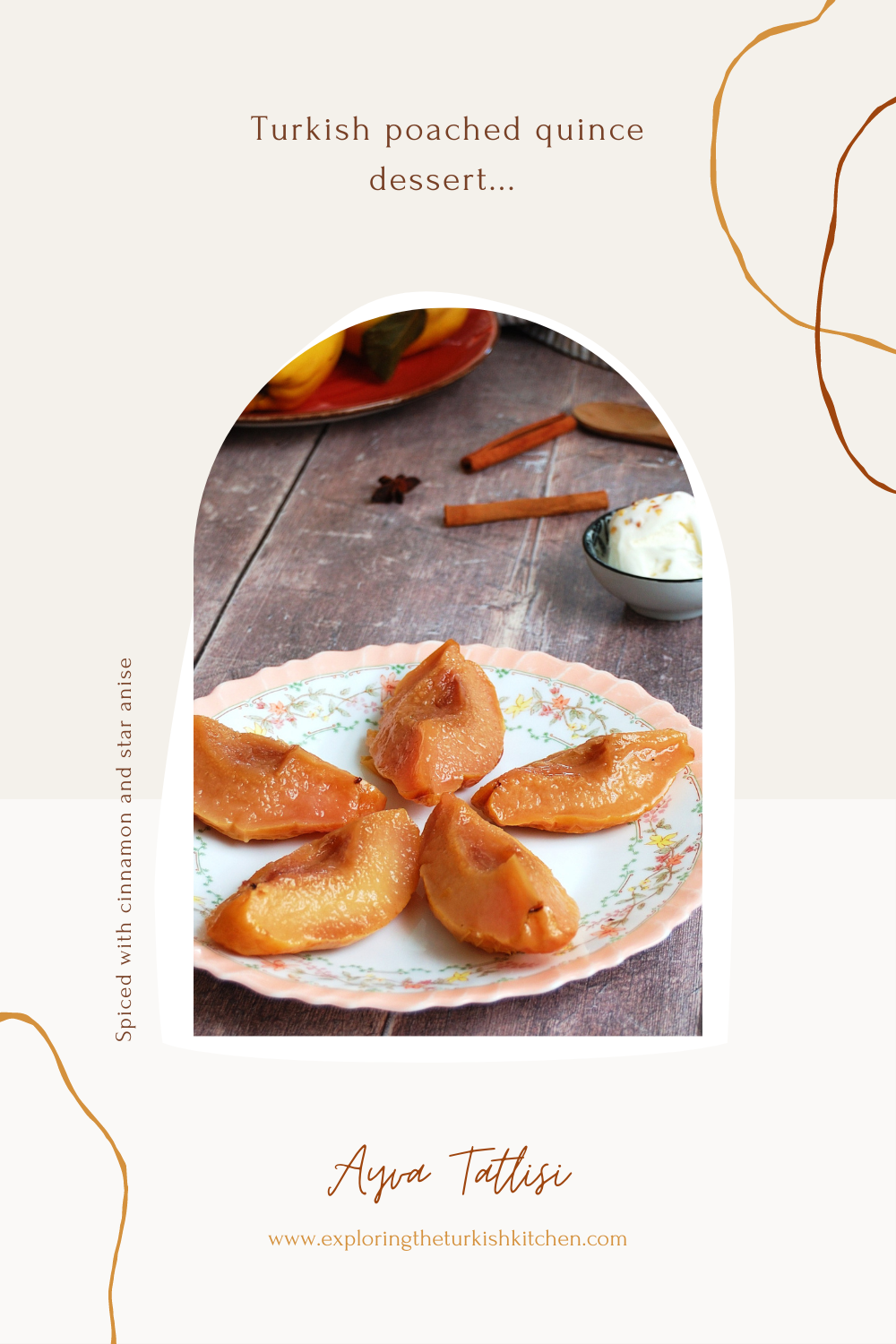I love the winter market because of the mountain high stalls of yellow nobbly fruit decorated will their large green leaves.
Although the market is not the best environment to pick up floral-fruity fragrances, the site of that golden fruit feels like a promise of winter perfume that gets me excited enough to rush home with a kilo or two to leave on the kitchen island.
On a clear, crisp winters day when a gentle sun and cooling breeze are knocking on the window I know, I'll be rewarded with the heady fragrance of the queen of winter fruits - quince.

The smell and sight of quinces make me instantly think of hareems of Ottoman palaces: maybe it's their voluptuous shape, golden skin, enticing perfume or simply the promise of hidden rewards following some tender loving care.
Much like the women of the Sultan's harem, there are various quinces available here in Turkey, all with slightly different personalities and an array of wonderful golden tones when cooked.
A firm reminder, if you will, that even under a little heat, we can still become the best of ourselves.
Of course, if you're in a rush to taste the forbidden fruit so often associated with love and fertility, some varieties can be eaten raw if that suits your preference.
Ekmek (bread) and Eşme (An town in the Aegean region) are good examples of raw eating quince. The ekmek is the least fibrous and Eşme the juiciest but as it's quite high in tannins it therefore offers a more a sour taste.
The sour taste and fibrous texture are clearly loved by some but disliked by many because there is an expression in Turkish when an unpleasant situation has occurred, and trouble is to be expected.
'Ayvayı yedik' - We ate the quince!

I found all varieties work well when it comes to cooking, but the gentlest of flavours come from the ekmek (bread) variety. Still, I can forgive that because I'm won over by its large size, which offers less work in peeling such uneven fruit should you wish and is forgiving for potential overcooking.
What to make with quince?
The ripe fruit is high in pectin so it's a wonderful fruit for making jams and sweets; Ayva reçeli and Ayva Tatlısı recipes are probably known off by heart by most housewives here in Turkey.
I've discovered other interesting sweet uses so far: quince flavoured custard (Ayvalı muhallebi), marmalade, compote, and Ayva pelts, which is essentially much like Dulce de Membrillo and Quince Köfter surprisingly a sweet rather than a meatball!
In modern Turkish cuisine, rarer are savoury dishes including pilafs, salads and vegetable sides and meat-based dishes such as dolma - stuffed quince and meat stews with quince bring a welcome tart hit and act as a tenderiser to commonly used mutton.
There are plenty of choices and an excuse to bring home from the weekly market a bag of these fragrant lovelies.

How To Make Ayva Tatlısı:
For my Turkish quince dessert, I like to part-poach and then finish off in the oven. This leads to the most delightful caramelised sticky finish that everyone loves. It isn't necessary though. You can do the whole thing on the stovetop; simply keep it simmering away until you're happy they're nice and tender.
I confess we eat this several times over the cooler months more than we maybe should as so I hold onto my leftover syrup after reducing down. It keeps in the fridge so well, and each time I make it, I'll half the sugar amount and use the syrup from the last batch. It makes the colour all that rosy and packs a nice punch. We also add it as a syrup for ice cream and use it as a cordial when the weather starts to warm up again. It's a magical syrup that should be held onto.
Turkish sweet perfumed quinces poached in an aromatic syrup before a light roasting resulting in tender melt in the mouth fruit with a sticky caramelised skin. The rose gold Jewell of Turkish winter produce.
Quince With Star Anise & Cinnamon Ayva Tatlısı
Category:
Desserts, Drinks & Sweet Treats
Seasons
Cuisine Type
Turkish
Ingredients
Ayva Tatlısı
2 Large Quinces 270 Grams Sugar (1.5 'Su' glasses) 500 Millilitres Water (2.5 'Su' glasses) 1 Cinnamon stick 1 Star anise Quince With Star Anise & Cinnamon Ayva Tatlısı Directions
Recipe notes



